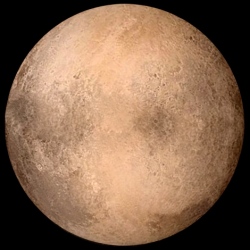
Astronomers at the European Southern Observatory (ESO) have discovered three planets orbiting a dwarf sun 40 light-years from Earth. Researchers say all three worlds are potentially habitable given their sizes and temperatures, and may be the best candidates yet in the search for life.
Using the TRAPPIST (TRAnsiting Planets and PlanetesImals Small Telescope) instrument at ESO’s La Silla station located near the ALMA complex in the Atacama Desert, Peru, astronomers spotted spotted the three worlds rotating around an ultracool red dwarf star dubbed 2MASS J23062928-0502285, but now also known as TRAPPIST-1.
Subsequent observations using more powerful telescopes, including ESO’s 8-meter (26-ft) Very Large Telescope HAWK-I near-infrared instrument located nearby, have confirmed that the planets spinning around TRAPPIST-1 appear to be close in size to Earth. Two of the planets have well-defined orbital periods of around 1.5 days, and 2.4 days, whilst the third planet seems to be somewhat less stable, with an orbital period that varies widely between 4.5 to 73 days.
"This really is a paradigm shift with regards to the planet population and the path towards finding life in the Universe," said Emmanuël Jehin, from the Institut d’Astrophysique et Géophysique at the University of Liège in Belgium and Research Associate on the TRAPPIST team. "So far, the existence of such ‘red worlds’ orbiting ultra-cool dwarf stars was purely theoretical, but now we have not just one lonely planet around such a faint red star but a complete system of three planets!"
Though these worlds have sizes and temperatures similar to those of Venus and Earth, two of them are in very close orbit to their parent star, which means that they are closer to their sun than habitable zone requirements normally allow. However, because the star is so much fainter than the Sun, the researchers believe it is still possible the two inner planets may have habitable areas on their surfaces. The furthest of the two inner planets receives approximately twice the radiation received by the Earth and the inner one four times as much.
The third and outermost planet has an orbit that still appears erratic, but the team believes that at its farthest point it is probably less irradiated than the Earth, but could still receive enough radiation to put it in the habitable zone.
"Why are we trying to detect Earth-like planets around the smallest and coolest stars in the solar neighbourhood? " asks Gillon. "The reason is simple: systems around these tiny stars are the only places where we can detect life on an Earth-sized exoplanet with our current technology. So if we want to find life elsewhere in the Universe, this is where we should start to look."
